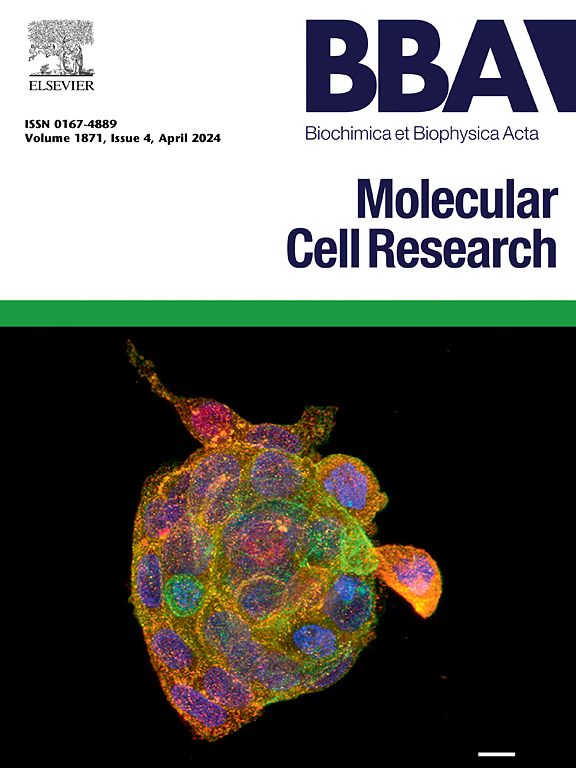XCL1: a multifunctional chemokine with metamorphic properties and therapeutic potential after injury to the nervous system – review
IF 3.7
2区 生物学
Q1 BIOCHEMISTRY & MOLECULAR BIOLOGY
Biochimica et biophysica acta. Molecular cell research
Pub Date : 2025-07-21
DOI:10.1016/j.bbamcr.2025.120028
引用次数: 0
Abstract
XC Motif Chemokine Ligand 1 (XCL1, known as lymphotactin), acting via XCR1, is a member of the chemokine family which includes molecules with chemotactic functions. However, subsequent years of research on this chemokine, while simultaneously exploring and understanding the complexity of the processes taking place in living organisms, have revealed a plethora of interesting information about its properties. This review aims to combine the current knowledge on the properties of XCL1 under pathological conditions, particularly in neuropathy. We wanted to draw attention to the unusual properties of XCL1 that have not yet been considered, such as its metamorphic properties and its mutual connections with glycosaminoglycans and integrin subunit alpha 9 (ITGA9). Furthermore, given the well-documented roles of XCL1 in the coordination of homeostatic and immune responses, we anticipate that a comprehensive understanding of the molecular interactions regulating XCL1 binding and activation of its receptors may facilitate the development of novel drugs targeting XCR1 or ITGA9 in various diseases. This point of view may be of great importance in the future for the modulation of systems related to this chemokine for therapeutic applications. This review aims to outline new areas of interest, to break out of following old patterns and dead ends and to sketch further research paths.

XCL1:一种具有神经系统损伤后变质特性和治疗潜力的多功能趋化因子。
XC Motif趋化因子配体1 (Chemokine Ligand 1, XCL1)是通过XCR1起作用的趋化因子家族的成员,该家族包括具有趋化功能的分子。然而,随后几年对这种趋化因子的研究,在探索和理解生物体中发生的过程的复杂性的同时,揭示了关于其特性的大量有趣信息。本综述旨在结合目前关于XCL1在病理条件下,特别是在神经病变中的特性的知识。我们希望引起人们对XCL1尚未被考虑的不寻常性质的注意,例如它的变质性质以及它与糖胺聚糖和整合素亚基α 9 (ITGA9)的相互联系。此外,鉴于XCL1在协调体内平衡和免疫反应中的作用,我们预计,全面了解调节XCL1结合及其受体激活的分子相互作用可能有助于开发针对各种疾病的XCR1或ITGA9的新型药物。这一观点可能是非常重要的,在未来的系统调节相关的趋化因子的治疗应用。这篇综述旨在概述新的兴趣领域,打破旧的模式和死胡同,并勾勒出进一步的研究路径。
本文章由计算机程序翻译,如有差异,请以英文原文为准。
求助全文
约1分钟内获得全文
求助全文
来源期刊
CiteScore
10.00
自引率
2.00%
发文量
151
审稿时长
44 days
期刊介绍:
BBA Molecular Cell Research focuses on understanding the mechanisms of cellular processes at the molecular level. These include aspects of cellular signaling, signal transduction, cell cycle, apoptosis, intracellular trafficking, secretory and endocytic pathways, biogenesis of cell organelles, cytoskeletal structures, cellular interactions, cell/tissue differentiation and cellular enzymology. Also included are studies at the interface between Cell Biology and Biophysics which apply for example novel imaging methods for characterizing cellular processes.

 求助内容:
求助内容: 应助结果提醒方式:
应助结果提醒方式:


